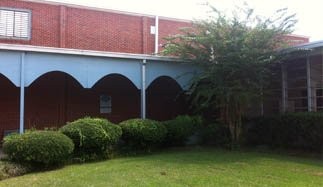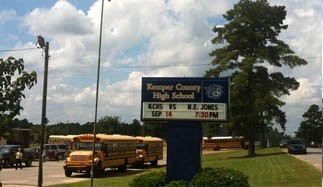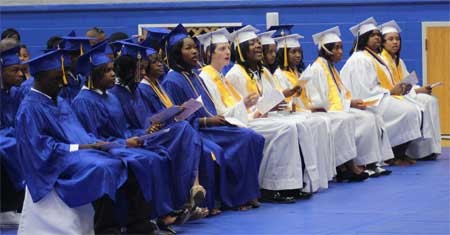Kemper County High School (formerly Dekalb High School)
Introduction
Text-to-speech Audio
Images
Exterior of Dekalb High School

Dekalb High School is now known as Kemper County High School

Black and white students from Kemper County High School (formerly Dekalb High School) graduate in 2013

Backstory and Context
Text-to-speech Audio
In 1968 the United States Supreme Court ruled in Green vs. County School Board that the method used by many southern states to legally desegregate their school systems, which was known as the “freedom of choice” method, was no longer an effective method of desegregation due to the fact that schools were largely still segregated in the south.1 Dekalb High School in Kemper County, Mississippi was certainly not an exception to this trend as the state as whole resisted desegregation up until 1970, which was sixteen years after the Brown vs. Board of Education case was decided on.1 White Mississippians were determined to hold onto their system of separate school for their children though, so at Dekalb High School officials from the county essentially created two schools within one building to evade the mandate in Alexander vs. Holmes that called for the termination of dual school systems based on race and the establishment of desegregated systems.1
At Dekalb High School avoiding this mandate was done by creating two schools under one roof: one for African Americans students and one for white students. The races were separated in every way possible within the school; there were two wings of the school, one which was used by Black students and one that was used by white students.2 There were separate school buses that brought students to class, with Black bus drivers driving the ones for the Black students and white bus drivers driving the ones for white students. The school even had two bells to signal the changing of classes; one bell was called the “Black bell,” which signaled the Black students to change classes at a different time from the white students so that the students did not mingle in between classes. The students ate lunch at different times, and there were even separate drinking fountains.2
Black leaders, students, and parents quickly noticed the continued segregation within the “desegregated” school and successfully fought to remove the racist practices. However, there were more subtle ways that school officials went about segregating schools like Dekalb High School, such as grouping students by “ability levels.”3 Today, Kemper County High School is housed in what was originally called Dekalb High School and stands as a testament to the country’s dedication to desegregate schools in Mississippi in the 1970s.